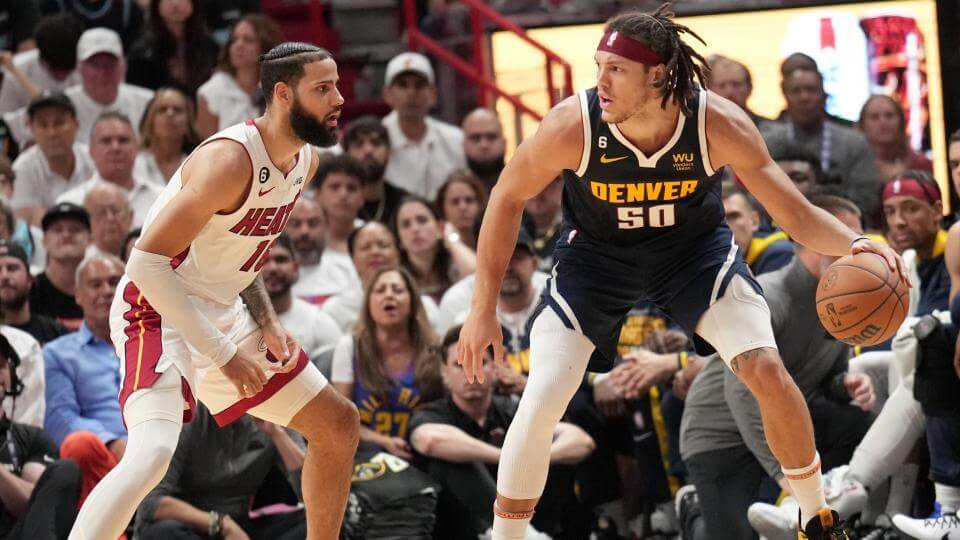Game 4 NBA Finals Analysis: The Nuggets' Size Once Again Makes the Difference

The intricate dance of a basketball game often centers around physical prowess, tactical expertise, and the ability to adapt swiftly to ever-changing situations. Game 4 of the NBA Finals offered yet another opportunity to witness the dance unfold, this time with the Denver Nuggets firmly setting the tempo. Their physical edge and size were once again instrumental in securing another victory, bringing them tantalizingly close to capturing the Larry O'Brien Trophy. So, let's dig deep into the tactical and technical dynamics that played out during this decisive game.
First, let's recap the story so far:
Game 1 analysis revealed how the Nuggets found the winning formula against the Heat. Game 2 saw Erik Spoelstra, the Heat's coach, gaining control of the game's strategy, while Game 3 saw the Nuggets bounce back, controlling the paint.
Unfortunately for the Heat, they were unable to adjust to the Nuggets' size advantage. The Heat's Caleb Martin, Max Strus, and Gabe Vincent have had to quite literally look up to their opponents throughout the series, failing to counterbalance the Nuggets' towering presence. A similar narrative unfolded in Game 4.
Despite having a reputation for taking care of the ball during the playoffs, the Heat faltered significantly in Game 4, losing the ball more frequently than usual. Denver and Miami had been leading the playoffs with the fewest turnovers, but in this game, the Heat gave up possession on a whopping 16.5% of their plays, twice as bad as the Nuggets' 8.8% TOV%.
This gave Denver the opportunity to utilize "Cross Matches" - mismatches created from the previous offensive possession. With Heat players out of position following an offensive play, the Nuggets capitalized by forcing smaller defenders to guard their larger players. This strategic maneuver, combined with Miami's frequent turnovers, facilitated Denver's scoring efficiency significantly.
Aaron Gordon, in particular, thrived in these mismatch scenarios. He made the most of his size and strength, dominating smaller Heat defenders to rack up 27 points, 7 rebounds, and 6 assists. When a player like Gordon also finds his rhythm from the three-point line (3/4 in this game), slowing him down becomes a daunting task, one that Erik Spoelstra has yet to figure out.
Surprisingly, Bruce Brown emerged as the X-factor in this game. Coming off the bench, Brown put up impressive numbers, including 21 points, four rebounds, and two assists, shooting 8/11 from the field and 3/5 from three. His off-ball movement and shooting range added another layer to Denver's attack, compounding Miami's defensive issues.
As we look forward to Game 5, some adjustments Erik Spoelstra might consider could include giving Kevin Love more minutes, handing the reins to Jimmy Butler, utilizing Duncan Robinson more, or even... playing with six players on the court? Well, maybe not the last one.
Returning to Colorado, the Nuggets have a comfortable lead and the opportunity to wrap things up at home. Michael Malone's strategy, built around the size of his players, has controlled the chessboard so far. Can Erik Spoelstra muster a counter-strategy in time to save Miami from a checkmate? We'll find out in Game 5, as the NBA Finals series continues to keep us all on the edge of our seats.

